
Georgian architecture is the name given in most English-speaking countries to the set of architectural styles current between 1714 and 1830. It is named after the first four British monarchs of the House of Hanover, George I, George II, George III, and George IV, who reigned in continuous succession from August 1714 to June 1830.
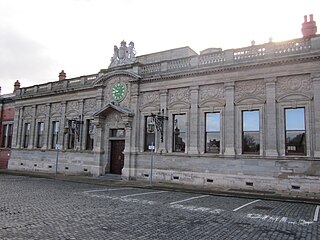
Lever Brothers was a British manufacturing company founded in 1885 by two brothers: William Hesketh Lever, 1st Viscount Leverhulme (1851–1925), and James Darcy Lever (1854–1916). They invested in and successfully promoted a new soap-making process invented by chemist William Hough Watson. Lever Brothers entered the United States market in 1895 and acquired Mac Fisheries, owner of T. Wall & Sons, in 1925. Lever Brothers was one of several British companies that took an interest in the welfare of its British employees. Its brands included "Lifebuoy", "Lux" and "Vim". Lever Brothers merged with Margarine Unie to form Unilever in 1929.

The Lady Lever Art Gallery is a museum founded and built by the industrialist and philanthropist William Lever, 1st Viscount Leverhulme and opened in 1922. The Lady Lever Art Gallery is set in the garden village of Port Sunlight, on the Wirral and one of the National Museums Liverpool.

Port Sunlight is a model village in the Metropolitan Borough of Wirral, Merseyside, England. It is located between Lower Bebington and New Ferry, on the Wirral Peninsula. Port Sunlight was built by Lever Brothers to accommodate workers in its soap factory ; work commenced in 1888. The name is derived from Lever Brothers' most popular brand of cleaning agent, Sunlight.
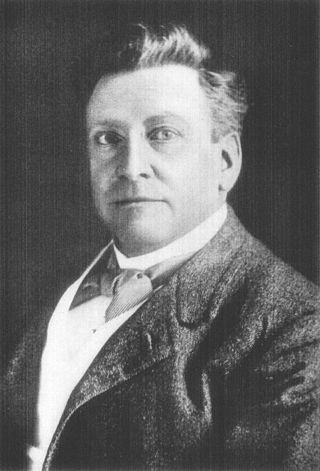
William Hesketh Lever, 1st Viscount Leverhulme, was an English industrialist, philanthropist, and politician. Having been educated at a small private school until the age of nine, then at church schools until he was fifteen; a somewhat privileged education for that time, he started work at his father's wholesale grocery business in Bolton. Following an apprenticeship and a series of appointments in the family business, which he successfully expanded, he began manufacturing Sunlight Soap, building a substantial business empire with many well-known brands such as Lux and Lifebuoy. In 1886, together with his brother, James, he established Lever Brothers, which was one of the first companies to manufacture soap from vegetable oils, and which is now part of the British multinational Unilever. In politics, Lever briefly sat as a Liberal MP for Wirral and later, as Lord Leverhulme, in the House of Lords as a Peer. He was an advocate for expansion of the British Empire, particularly in Africa and Asia, which supplied palm oil, a key ingredient in Lever's product line. His firm had become associated with activities in the Belgian Congo by 1911.

Sunlight is a brand of laundry soap, laundry detergent and dishwashing detergent manufactured and marketed around the world by Unilever, except in the United States and Canada, where it has been owned by Sun Products since 2010.

Neoclassical architecture, sometimes referred to as Classical Revival architecture, is an architectural style produced by the Neoclassical movement that began in the mid-18th century in Italy, France and Germany. It became one of the most prominent architectural styles in the Western world. The prevailing styles of architecture in most of Europe for the previous two centuries, Renaissance architecture and Baroque architecture, already represented partial revivals of the Classical architecture of ancient Rome and ancient Greek architecture, but the Neoclassical movement aimed to strip away the excesses of Late Baroque and return to a purer and more authentic classical style, adapted to modern purposes.

Thornton Hough is a village and former civil parish in the Wirral district of Merseyside, England. The village lies in the more rural inland part of the Wirral Peninsula and is of pre-Norman Conquest origins. The village grew during the ownership of Joseph Hirst into a small model village and was later acquired by William Lever, founder of Lever Brothers, the predecessor of Unilever. Thornton Hough is roughly 10 miles (16 km) from Liverpool and 12 miles (19 km) from Chester. It is part of the Clatterbridge ward and is in the parliamentary constituency of Wirral South.
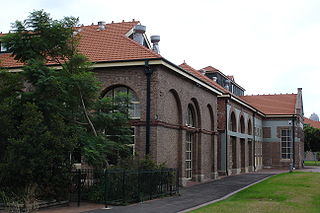
The Lever Brothers Factory was a soap factory in the suburb of Balmain in Sydney, Australia, which operated from 1895 until 1988. It employed many people from the local area and its large industrial buildings were a prominent feature of the landscape. Most of the site was demolished in 1996 to make way for an apartment complex, and only three of the original buildings remain.

The Newcastle Civic Theatre, also known as The Civic, is a heritage-listed building located on Hunter Street, Newcastle, Australia. Opened in 1929, the 1520-seat theatre is now the venue for a wide range of musicals, plays, concerts and dance events each year and is the city's oldest surviving theatre.
John Raphael Rodrigues Brandon was a British Gothic Revival architect and architectural writer, much of whose work was done in collaboration with his brother Joshua, until the latter's death in 1847.

St Stephen and All Martyrs' Church, Lever Bridge, is in Darcy Lever, Bolton, Greater Manchester, England. It is an active Anglican parish church in the deanery of Walmsley, the archdeaconry of Bolton, and the diocese of Manchester. The church is recorded in the National Heritage List for England as a designated Grade II* listed building, and is the first of three "pot churches" designed by Edmund Sharpe, so-called because they are constructed largely of terracotta.

The Glasgow International Exhibition was the second of 4 international exhibitions held in Glasgow, Scotland during the late 19th and early 20th centuries. The exhibition took place during a period of half-mourning requested by Edward VII but was still popular and made more than £35000 profit. The exhibition was opened by the King's daughter, the Princess Louise, Duchess of Fife.

Christ Church is in Church Drive, Port Sunlight, Wirral, Merseyside, England. It is an active United Reformed Church, and is recorded in the National Heritage List for England as a designated Grade II* listed building.

The Leverhulme Memorial stands to the west of the Lady Lever Art Gallery on the junction of Windy Bank and Queen Mary's Drive, Port Sunlight, Wirral, Merseyside, England. It commemorates the life of William Lever, 1st Viscount Leverhulme, the businessman who created the factory and model village of Port Sunlight. The memorial was designed by James Lomax-Simpson, and the sculptor was William Reid Dick. It consists of an obelisk with a figure on the top, with a separate group of four figures beside it. The memorial was unveiled in 1930. It is recorded in the National Heritage List for England as a designated Grade II listed building.

William Owen was an English architect who practised in Warrington, which was at that time in Lancashire, England. His works were confined to Northwest England. Owen is best known for his collaboration with William Lever in the creation of the soap-making factory and associated model village at Port Sunlight in the Wirral Peninsula. Here he designed the factory, many of the workers' houses, public buildings and the church. Later Owen was joined by his son, Segar, as a partner. On his own, or in partnership, Owen designed houses, churches, banks, public houses, an infirmary, a school, and a concert hall.

Hulme Hall in Port Sunlight, on the Wirral Peninsula in Merseyside, England, is a Grade II listed building, first registered as such in 1965.

Stanthorpe Post Office is a heritage-listed post office at 14 Maryland Street, Stanthorpe, Southern Downs Region, Queensland, Australia. It was designed by John Smith Murdoch of the Queensland Government Architect's office and was built by D. Stewart and Co in 1901. It was added to the Australian Commonwealth Heritage List on 22 June 2004.
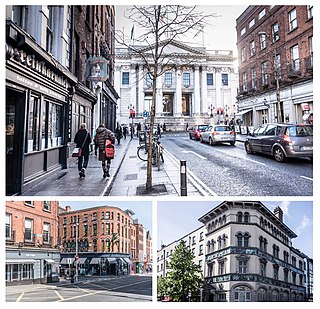
Parliament Street is a street located on Dublin's Southside. It runs from the junction of Dame Street and Cork Hill on its southern end to the junction of Essex Quay and Wellington Quay on its northern end where it joins directly onto Grattan Bridge and subsequently Capel Street.
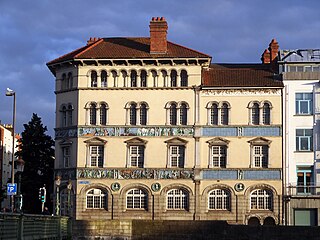
Sunlight Chambers is a commercial office building on the corner of Parliament Street and Essex Quay in the Temple Bar area of Dublin. It was designed by architect Edward Ould in an Italianate style and was named after Lever Brothers' Sunlight detergent brand.



















